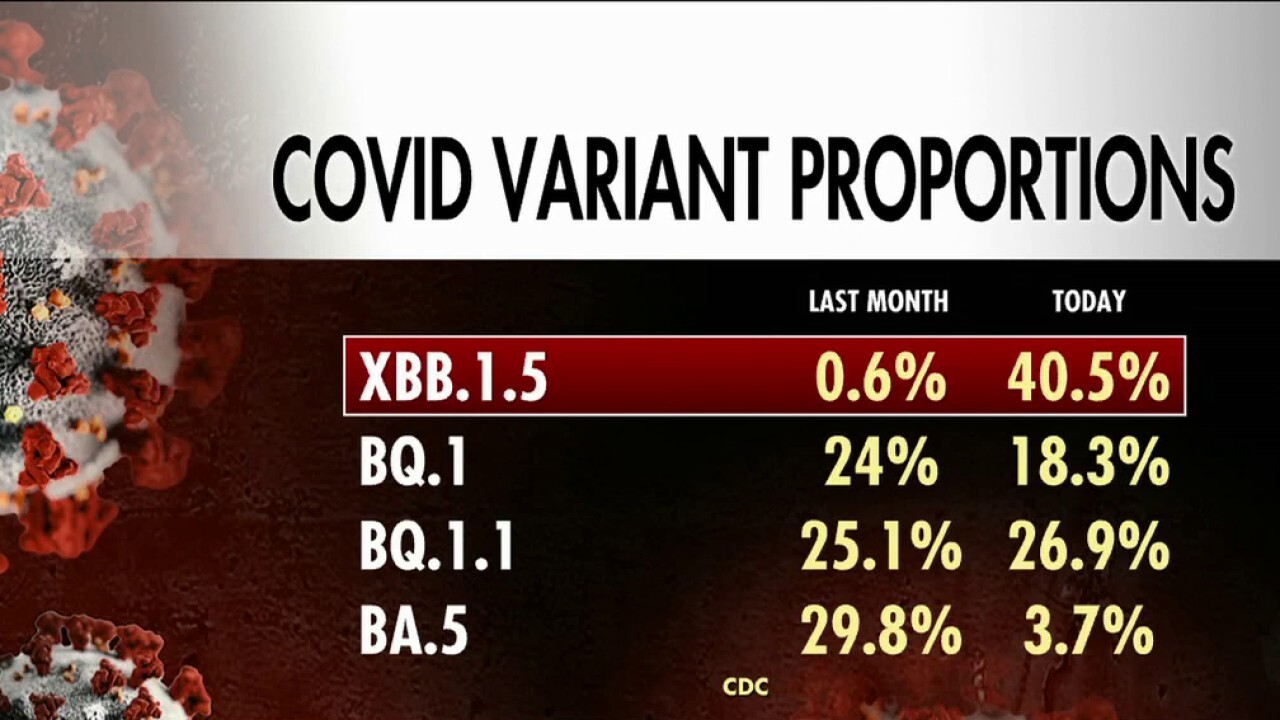COVID-19 Resurgence: Understanding The JN.1 Variant And Its Symptoms

Table of Contents
Understanding the JN.1 Variant
The JN.1 variant, a sublineage of Omicron, is characterized by specific genetic mutations that influence its behavior. While precise origins remain under investigation, its emergence highlights the ongoing evolution of the SARS-CoV-2 virus. Its relationship to other Omicron subvariants is currently being studied to determine if it possesses unique transmissibility or severity characteristics. Early data suggests its transmissibility might be comparable to, or slightly higher than, previously dominant Omicron subvariants, demanding careful monitoring.
- Key genetic mutations and their potential impact: Researchers are actively analyzing the specific mutations in JN.1 to determine their influence on transmissibility, immune evasion, and disease severity. This information is vital for developing effective countermeasures.
- Geographic spread and prevalence: The geographical distribution of JN.1 is being tracked closely. Data from various regions is essential to understand its spread patterns and potential for widespread circulation.
- Current scientific understanding and ongoing research: The scientific community is actively conducting research to understand the JN.1 variant fully. Studies are focusing on its characteristics, its interaction with the immune system, and the effectiveness of existing vaccines and treatments.
Symptoms of the JN.1 Variant
The symptoms associated with the JN.1 variant are generally similar to those observed with previous Omicron subvariants. While the severity can range from mild to severe, the most common symptoms include:
- Common symptoms: Fever, cough, fatigue, sore throat, runny nose, and headache.
- Less common symptoms: Loss of taste or smell (anosmia/ageusia), gastrointestinal issues (nausea, vomiting, diarrhea), muscle aches, and shortness of breath.
- Symptoms in vaccinated vs. unvaccinated individuals: While vaccination significantly reduces the severity of illness, breakthrough infections can still occur. Data comparing symptom severity in vaccinated and unvaccinated individuals infected with JN.1 is still being collected and analyzed.
- When to seek medical attention: Seek immediate medical attention if you experience severe symptoms such as difficulty breathing, persistent chest pain, or confusion. Early diagnosis and treatment are essential for managing severe cases.
Preventing the Spread of JN.1
Preventing the spread of the JN.1 variant requires a multi-faceted approach emphasizing proven preventative measures. These measures remain effective against all COVID-19 variants:
- Vaccination and booster shots: Vaccination remains the most effective way to protect against severe illness, hospitalization, and death. Booster shots provide additional protection against emerging variants.
- Proper hand hygiene: Regular handwashing with soap and water or using an alcohol-based hand sanitizer is crucial in reducing the transmission of the virus.
- Mask-wearing in appropriate settings: Wearing a mask in crowded indoor settings, particularly when ventilation is poor, can significantly reduce the risk of infection.
- Social distancing and avoiding crowded places: Maintaining physical distance from others, especially in crowded areas, helps limit contact and reduce transmission.
- Testing and contact tracing: Regular testing and contact tracing are vital tools for identifying and isolating infected individuals, thereby preventing further spread.
JN.1 Variant vs. Other COVID-19 Variants
Comparing JN.1 to other circulating variants, like other Omicron subvariants, is crucial for understanding its unique characteristics. While further research is needed, initial findings may reveal subtle differences in transmissibility or symptom presentation. A direct comparison requires ongoing data collection and analysis.
- A table comparing key characteristics: A detailed table comparing key characteristics (e.g., transmissibility, severity, symptom profile) of JN.1 with other variants would provide a clear overview, but comprehensive data is still being gathered.
- Focus on the unique aspects of JN.1: Specific mutations present in JN.1 may confer unique properties, necessitating dedicated research to ascertain their impact on the virus's behavior and potential for spread.
Conclusion: Staying Informed About the JN.1 Variant and Future COVID-19 Resurgences
The JN.1 variant, a sublineage of Omicron, shares similarities with other Omicron subvariants in terms of symptoms, although its unique genetic mutations warrant ongoing investigation. Preventative measures, such as vaccination, hand hygiene, mask-wearing, and social distancing, remain crucial in controlling its spread. Staying updated on the latest information from reputable sources like the CDC and WHO is vital. Stay informed about the JN.1 variant and other emerging COVID-19 variants by regularly checking reputable sources for updates. Understanding the JN.1 variant and its symptoms is crucial for protecting yourself and your community.

Featured Posts
-
 Defining The Good Life A Practical Guide
May 31, 2025
Defining The Good Life A Practical Guide
May 31, 2025 -
 Noticias Ticketmaster Caida Del Sistema 8 De Abril Grupo Milenio
May 31, 2025
Noticias Ticketmaster Caida Del Sistema 8 De Abril Grupo Milenio
May 31, 2025 -
 Building The Good Life Happiness Health And Well Being
May 31, 2025
Building The Good Life Happiness Health And Well Being
May 31, 2025 -
 Cleveland Fire Station Temporarily Closed Water Damage Forces Closure
May 31, 2025
Cleveland Fire Station Temporarily Closed Water Damage Forces Closure
May 31, 2025 -
 Tulsa Remote Worker Program A Cost Benefit Analysis
May 31, 2025
Tulsa Remote Worker Program A Cost Benefit Analysis
May 31, 2025
